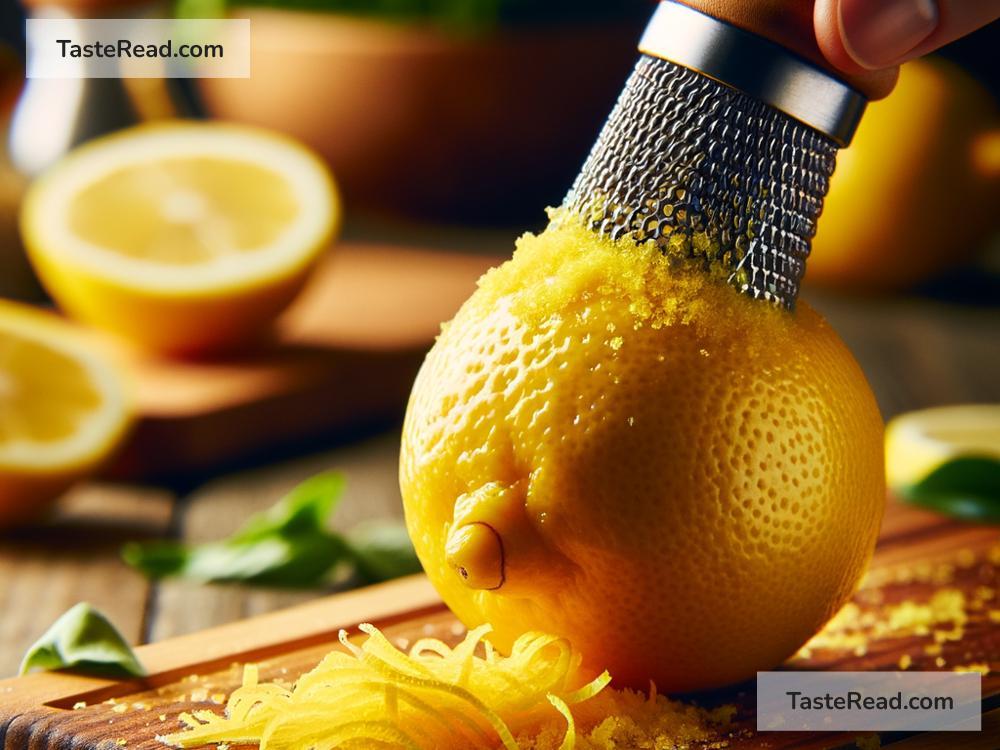The Truth About Lemon Zest and Its Aromatic Oils
Lemons are among the most versatile fruits in the world. Their sour juice adds brightness to foods, their yellow peel is attractive, and their scent is refreshing. But there’s one part of the lemon that’s often overlooked or misunderstood: the zest.
Lemon zest isn’t just a fancy word for the yellow skin of the lemon. It’s the outermost layer of the peel, and it’s packed with powerful aromatic oils that can transform your cooking, baking, or even household cleaning. In this blog, we’ll explore the truth about lemon zest, its aromatic oils, and how you can use this small but mighty ingredient.
What Is Lemon Zest?
Lemon zest is the thin layer of skin you scrape off the lemon, avoiding the white pith underneath. The zest is where the magic happens. It contains tiny glands full of essential oils—natural compounds that give lemons their characteristic fragrance and flavor.
If you’ve ever smelled a lemon and thought, “Wow, this aroma is bright and fresh!” you’re actually smelling those essential oils in the zest. These oils give lemon zest its knock-out power, which is why zest is often added to recipes to enhance flavors without adding liquid or acidity like lemon juice does.
What Makes Lemon Zest So Special?
The aromatic oils in lemon zest are what make it special. These oils are rich in compounds like limonene, citral, and geraniol. Don’t worry about the complicated names—what matters is their effects. Together, they create the bright citrusy scent and taste that people love.
Here’s why the aromatic oils matter:
-
Intensified Flavor: Lemon zest has a potent flavor that feels fresher and more complex than the juice alone. It can be subtle or bold, depending on how much zest you use.
-
Fragrance Boost: Lime, orange, and other citrus fruits have zest, but lemon zest is particularly famous for its uplifting scent, making it perfect for desserts, marinades, and savory dishes. It’s also amazing in cocktails!
-
Natural Health Perks: Lemon zest (and its oils) contains antioxidants, which help fight free radicals in your body. Some studies suggest the oils may have antibacterial and anti-inflammatory properties. Although zest is added in small quantities, every little bit helps.
-
Low Waste: Using lemon zest ensures you’re making full use of the fruit. Instead of cutting up a lemon and throwing away the peel, zesting gives the peel new life in cooking or decorating.
How to Get Lemon Zest
Getting lemon zest is simpler than you might think. The easiest way to remove zest is by using a zester or microplane—a small kitchen tool that grates the lemon’s outer layer finely. If you don’t have one, a box grater works just as well, using the smallest holes. Even a vegetable peeler can be used to peel off strips of zest, which can then be chopped for finer pieces.
Pro Tips:
- Avoid the pith: The pith is the white layer under the peel. It tastes bitter and adds unwanted flavors to dishes. When zesting, focus only on the thin, colorful part of the peel.
- Wash your lemon: Always wash lemons well before zesting, especially if they’re non-organic. Lemons can be coated in wax or pesticides, and washing helps remove unwanted chemicals.
- Zest before juicing: It’s much easier to zest a whole lemon than it is after cutting or squeezing it.
When and Where to Use Lemon Zest
Lemon zest might seem like a small touch, but it works wonders in a variety of dishes. Its aromatic oils shine especially bright in recipes like desserts, sauces, and drinks. Here are some examples of how you can use lemon zest:
- Desserts: Cakes, cookies, cheesecakes, and ice cream benefit immensely from zest. Think lemon pound cake or lemon bars—both rely on zest for that unforgettable citrus taste.
- Savory Dishes: Zest enhances marinades, salad dressings, and pasta sauces. Imagine the zest lifting a creamy alfredo or giving grilled chicken a subtle citrus note.
- Drinks: Lemon zest works beautifully in cocktails, lemonade, or tea. Garnishing a drink with zest adds flair and flavor.
- Cleaning: The aromatic oils in lemon zest aren’t just good for cooking—they’re also natural cleaners! Adding lemon zest or essential oils to water and vinegar creates a fresh-smelling cleaning solution for your home.
Are Aromatic Oils Lost When Cooking?
You might wonder if lemon zest loses its punch during cooking. The answer is: it depends. Heat can reduce the intensity of the aromatic oils slightly, but the flavor doesn’t completely disappear. To retain the zest’s freshness, add it toward the end of cooking rather than at the start. In baking, the oils bind well to sugar or butter, infusing them with the citrus flavor.
The Environmental Bonus of Using Zest
Using lemon zest is not just great for your taste buds—it’s eco-friendly. Instead of throwing away the peel, you’re making the most of the fruit’s entire potential. It’s a great way to reduce food waste while boosting flavors in your kitchen.
The Final Verdict on Lemon Zest
Lemon zest might seem small and simple, but it’s one of the most powerful parts of the lemon. Packed with aromatic oils, it enhances flavors, uplifts scents, and even has some health benefits. Whether you’re whipping up a dessert or cleaning your home naturally, lemon zest is your secret weapon.
So the next time you pick up a lemon, don’t just focus on the juice. Grab your zester and let the outer layer of this humble fruit work its magic. After all, the zest is where all the goodness lies!


